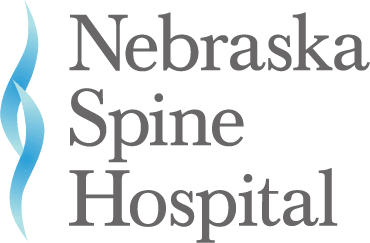Millions of people in the United States suffer from sciatica. Sciatica is a term used to describe the symptoms of leg pain, tingling, and numbness or weakness originating in the lower back to the sciatic nerve in the back of the leg.
What surprises most of our patients is that sciatica is not a medical diagnosis, it is merely a symptom of another underlying medical condition. The cause can vary, but the three most common underlying issues are a bulging disc, spinal stenosis, and spondylolisthesis.Sciatica is not a medical diagnosis, it is a symptom of another underlying condition. Click To Tweet
Quick Sciatica Facts
- Sciatica is most common in individuals 40-50 years old
- Sciatica isn’t the result of an injury, it develops over time
- The sciatic nerve is the largest single nerve in the body
- It’s rare to suffer permanent sciatic nerve damage as a result of sciatica
Symptoms
Those suffering from sciatica often experience one or more of the following symptoms:
- Constant pain in one side of the buttock or leg; rarely, the pain can occur in both legs
- Pain that worsens while sitting
- Burning or tingling leg pain
- Weakness, numbness, or difficulty moving the leg or foot
- A sharp pain that makes it difficult to stand up or walk
Most people who experience these symptoms feel better within a few weeks or months. Many find pain relief through alternating heat and cold therapy, pain medications, and steroid injections.
Exercises
Engaging in regular gentle strengthening and stretching can help you recover from a flareup. The following exercises focus on core strength and hamstring stretches.
Pelvic Tilt
- Lie on your back with your knees bent and feet flat on the floor.
- Focus on pulling your belly button in, automatically flattening your back towards the floor and rolling your pelvis up towards your chest.
- Hold for 20 seconds before relaxing.
- Complete 10 repetitions of this exercise.
Straight Leg Raise
- To begin, perform a pelvic tilt as described above.
- Straighten one leg and gently raise it a few inches, then return it to the floor.
- Complete 10 repetitions, then repeat with your other leg.
Back Flexion
- Lie on your back with your legs flat on the floor.
- Gently pull your knees to your chest, stopping when you feel a comfortable stretch in your lower back.
- Hold for 30 seconds before returning to the starting position.
- Complete 4-6 repetitions.
Always consult your physician before beginning a new exercise program.
Treatment Options
Treatment is focused on identifying and relieving the underlying medical issue, so the treatment options vary greatly. What works for one patient most likely won’t work for someone else.
If you or a loved one is experiencing the symptoms listed above, it’s important to seek medical attention. We posted this article for educational purposes only. It is not meant to serve as medical advice.


